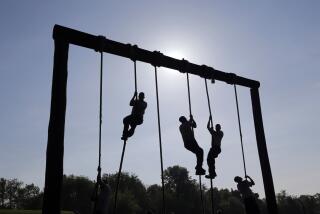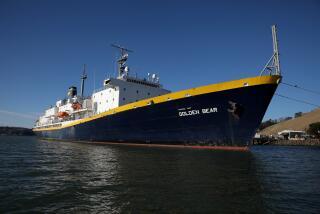Rough Seas at Annapolis : Navy and other academies must demand the highest standards of conduct
- Share via
Getting into the U.S. Naval Academy is far from easy. Among other things, young men and women must demonstrate academic skills and responsible characters. Those accepted are called on to work hard and sacrifice much. But the middies who make it through to graduation will have received a free education at a premier institution and will enjoy the right to embark on a naval career enhanced by an Annapolis diploma.
With so much at stake, it’s hard to imagine why anyone would risk getting involved with illegal drugs. But as the latest Navy scandal sadly shows, even the halls of Annapolis are not immune from this scourge.
Last month, the Navy began an investigation into drug use at the academy after two students were found with hallucinogens off campus. Now, officials say, 24 students face possible disciplinary action for the alleged sale or use of LSD or marijuana.
Because the Navy cannot afford to have any policy on drugs other than zero-tolerance, the penalties surely and rightly would be severe. Discharge or time in the brig is a likelihood for anyone found guilty by court-martial.
A number of studies show that after a decade-long deline, there has been a sharp increase in drug use and experimentation among high school-age students across the racial and socioeconomic spectrum. The 1994 National Household Survey on Drug Abuse revealed, for example, that marijuana use among youths 12-17 doubled between 1992 and 1994. The University of Michigan found an increasing number of kids used LSD and other psychedelic drugs in the same period.
The Annapolis investigation and the promise of appropriate punishment show that there are clear boundaries and consequences in military life and that some forms of behavior are fully unacceptable. The message is clear. Sadly, in the society at large, messages of this kind are far more ambiguous.
More to Read
Sign up for Essential California
The most important California stories and recommendations in your inbox every morning.
You may occasionally receive promotional content from the Los Angeles Times.













